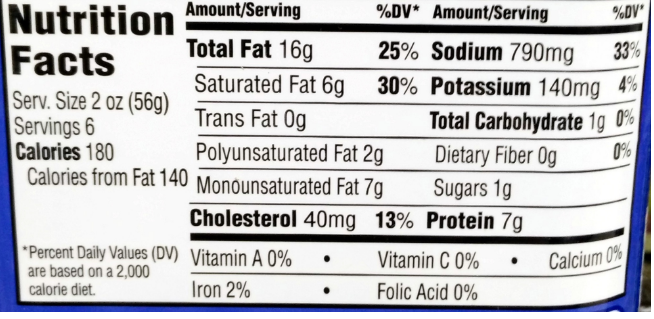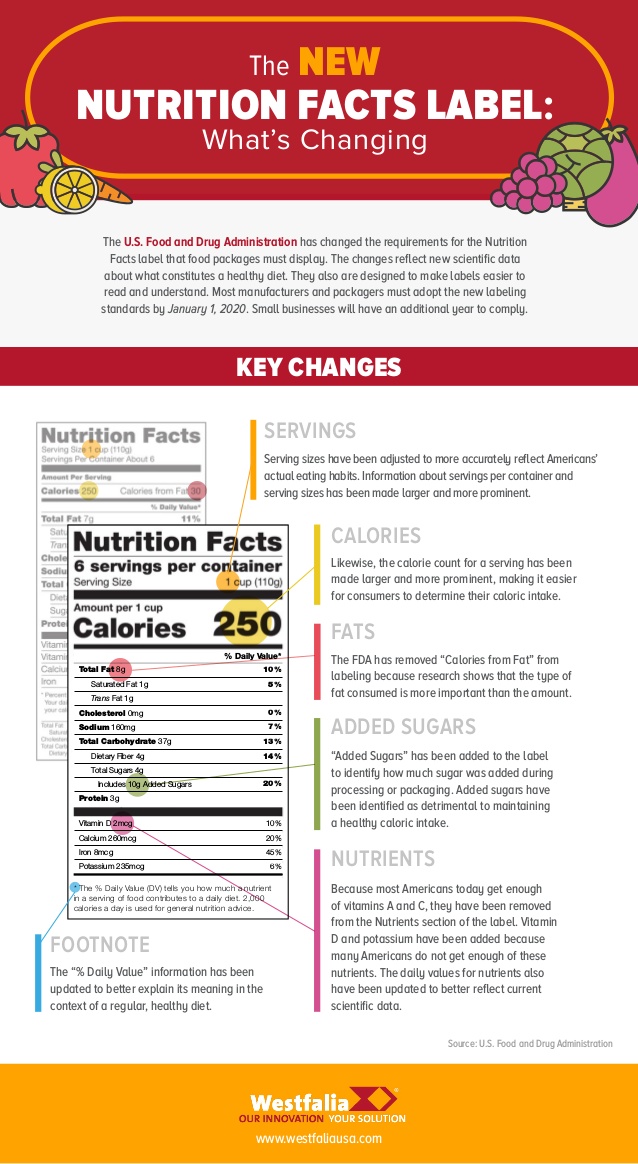Changes to The Nutrition Facts Label That You Should Know
 As new diet and health trends continue to pop up and take hold, health officials are required to stay ahead of the curve. Each of these new trends require the FDA to research and regulate what products are made available to the public. The regulations make up a number of the governing factors that affect the way that food-based operations are handled throughout the United States. Ranging from the creation of the nutrition facts label, to the way that different businesses pack, store and ship the food products they produce. In 2020, the FDA made a number of significant changes to the information that the Nutrition Facts Label presented to consumers, hoping to give them a better understanding of the food we eat and how it affects our lives.
As new diet and health trends continue to pop up and take hold, health officials are required to stay ahead of the curve. Each of these new trends require the FDA to research and regulate what products are made available to the public. The regulations make up a number of the governing factors that affect the way that food-based operations are handled throughout the United States. Ranging from the creation of the nutrition facts label, to the way that different businesses pack, store and ship the food products they produce. In 2020, the FDA made a number of significant changes to the information that the Nutrition Facts Label presented to consumers, hoping to give them a better understanding of the food we eat and how it affects our lives.
Beginning with the visual changes, the text for specific units of the label have become much larger and have been bolded.
Serving Size Adjustments: the FDA found that a majority of people were consuming more food than they needed to with regards to the indicated serving size on food products. For example, take your favorite bag of chips. In most cases, you rip that bag open ready to finish each chip it contains. However, the serving size for these products is usually only 20% of the bag. Clearly not many people considered this, and as such, the FDA has made some adjustments. The serving size information is now bolded and placed so that it’s one of the first bits of information you see when inspecting the label.
Calorie Values: the total amount of calories per food product is now printed with the largest font of the entire label. This has been coupled with changes to the amount of information provided about the nutrition behind the calories as well. Daily value percentages of each nutrient in relation to the recommended 2000 calorie per day diet, and more detailed information regarding chemicals such as cholesterol, sodium, and others have also been included.
Additional Required Ingredient List: prior to 2020, ingredients such as sugars and various vitamins were not required to be included on the label of any food product. However, now these ingredients have been required to be included on the nutrition facts label of any food product as they’ve been indicated to help in establishing healthy eating habits.
Now that a number of the changes to the label have been detailed, it’s important to consider why these changes may have been made.
Knowing More About The Foods You Eat: more information regarding the composition of the food you consume is never a bad thing. Knowing what products are good and bad for you has been made much easier now due to these changes. For example, previously to these changes, the amount of added sugars were kept private from consumers. These are the sugars that are added in the processes of storing and shipping food products. Prior to these changes, a number of people likely mistook products as healthy but were unaware of all the added sugars that they were consuming.
Tracking Consumption: now that the information provided to consumers has been updated, it becomes much easier to track what we are actually eating and understand how it’s contributing to our health on a daily basis. This also allows consumers to establish more healthy eating habits over the long-term which can lead to a more positive mood and improved physical and mental well-being.

Author bio:John Hinchey is VP of Sales for Westfalia Technologies, Inc., a leading provider of logistics solutions for plants, warehouses and distribution centers. He has more than 20 years of experience in manufacturing and warehouse automation.